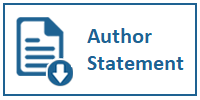IT Master Plan
Guidelines and Preparation
DOI:
https://doi.org/10.31937/si.v10i2.895Abstract
The rapid development of business, supported by technological developments that are not less rapid, it requires a strong and precise alignment between business strategies or organizations with the Information Systems (IS) strategy and Information Technology (IT)
strategies as supporters. An IT strategy plan includes many aspects, covering several aspects which include aspects of technology architecture,
roadmap / work plan, and supporting standards for its implementation. This Guidelines for Preparation and Implementation of the IT Master
Plan, explains the methods and main steps in managing and implementing IT strategy to support the implementation of the main tasks and the achievement of the strategic objectives of an organization or company. An important aspect that concern to the author is the importance of organizational and management involvement. Which is a key aspect of the planning process, together to ensure that all IS components have the same goals and direction as the business so it is easy to identify organizations that have not aligned. The logical relationship between business strategy and IT strategy does not usually occur directly, but through an intermediary for determining the IS Strategy, the strategy must be able to translate business strategies into the perspective of data and information flow to finally determine the information and communication technology work plan up to the specified year compiled in an IT Master Plan.
Downloads
Downloads
Published
How to Cite
Issue
Section
License
Authors retain copyright and grant the journal right of first publication with the work simultaneously licensed under a Creative Commons Attribution-ShareAlike International License (CC-BY-SA 4.0) that allows others to share the work with an acknowledgement of the work's authorship and initial publication in this journal.
Authors are able to enter into separate, additional contractual arrangements for the non-exclusive distribution of the journal's published version of the work (e.g., post it to an institutional repository or publish it in a book), with an acknowledgement of its initial publication in this journal.
Copyright without Restrictions
The journal allows the author(s) to hold the copyright without restrictions and will retain publishing rights without restrictions.
The submitted papers are assumed to contain no proprietary material unprotected by patent or patent application; responsibility for technical content and for protection of proprietary material rests solely with the author(s) and their organizations and is not the responsibility of the ULTIMA InfoSys or its Editorial Staff. The main (first/corresponding) author is responsible for ensuring that the article has been seen and approved by all the other authors. It is the responsibility of the author to obtain all necessary copyright release permissions for the use of any copyrighted materials in the manuscript prior to the submission.















